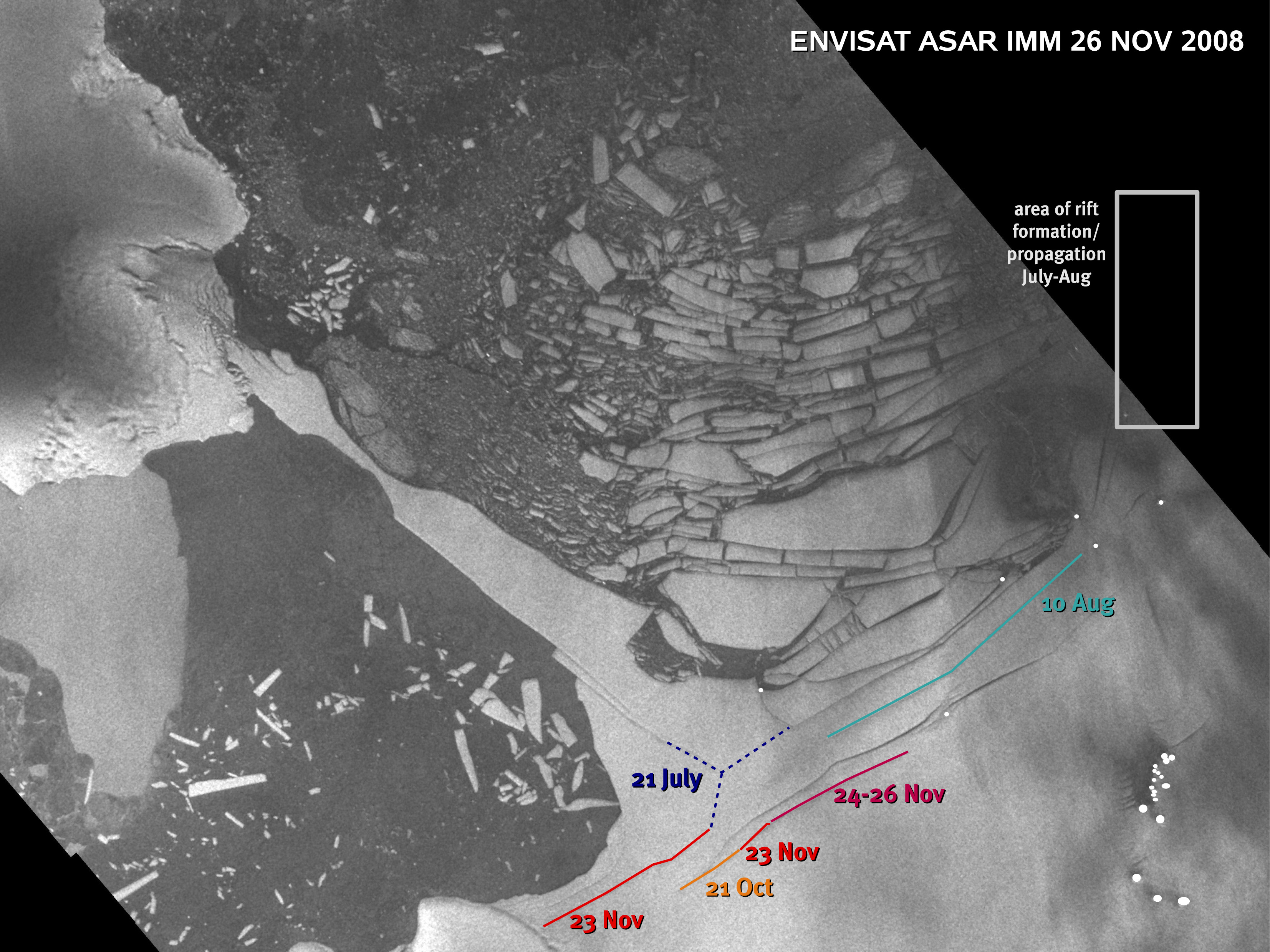[/caption] Recent satellite images show new rifts have developed on the Wilkins Ice Shelf which could possibly lead to the opening of the ice bridge that has been preventing the shelf from disintegrating and breaking away from the Antarctic Peninsula. The ice bridge connects the Wilkins Ice Shelf to two islands, Charcot and Latady. As seen in the image above acquired Envisat on November 26, 2008, new rifts (denoted by different colored lines and dates of the events) have formed to the east of Latady Island and appear to be moving in a northerly direction. "These new rifts, which have joined previously existing rifts on the ice shelf (blue dotted line), threaten to break up the chunk of ice located beneath the 21 July date, which would cause the bridge to lose its stabilization and collapse," said Dr. Angelika Humbert from the Institute of Geophysics at Münster University.
The Wilkins Ice Shelf, a broad plate of floating ice south of South America on the Antarctic Peninsula, had been stable for most of the last century before it began retreating in the 1990s. The peninsula has been experiencing extraordinary warming in the past 50 years of 2.5°C.
In the past 20 years, seven ice shelves along the Antarctic Peninsula have retreated or disintegrated, including the most spectacular break-up of the Larsen B Ice Shelf in 2002, which Envisat captured within days of its launch. [caption id="attachment_21674" align="alignnone" width="400" caption="Map showing break-up events of Larsen-B and Wilkins ice shelves, as observed by Envisat, in Antarctica. Credits: ESA"]
[/caption] In February 2008 an area of about 400 km² broke off from the Wilkins Ice Shelf, narrowing the ice bridge down to a 6 km strip. At the end of May 2008 an area of about 160 km² broke off, reducing the ice bridge to just 2.7 km. Between 30 May and 9 July 2008, the ice shelf experienced further disintegration and lost about 1,350 km².
If the ice shelf breaks away from the peninsula, it will not cause a rise in sea level since it is already floating. However, ice shelves on the Antarctic Peninsula are sandwiched by extraordinarily raising surface air temperatures and a warming ocean, making them important indicators for on-going climate change.
Source:
ESA
 Universe Today
Universe Today
